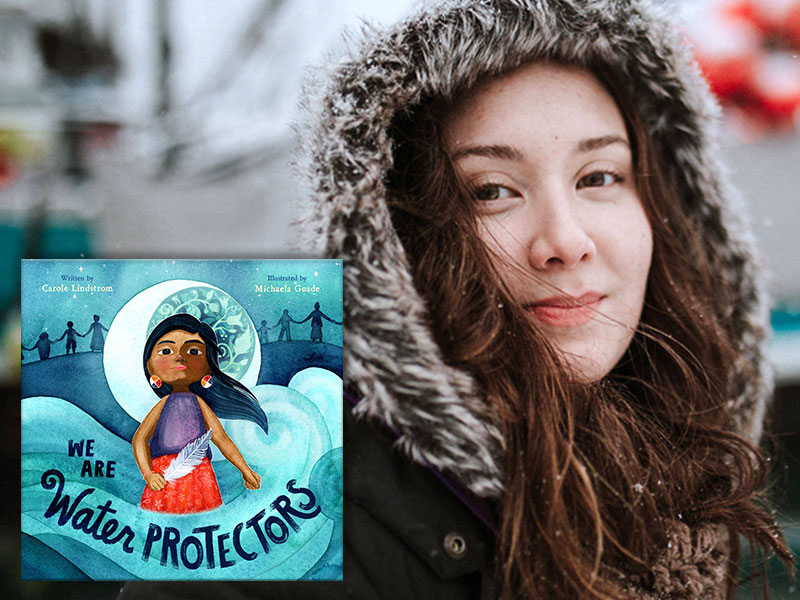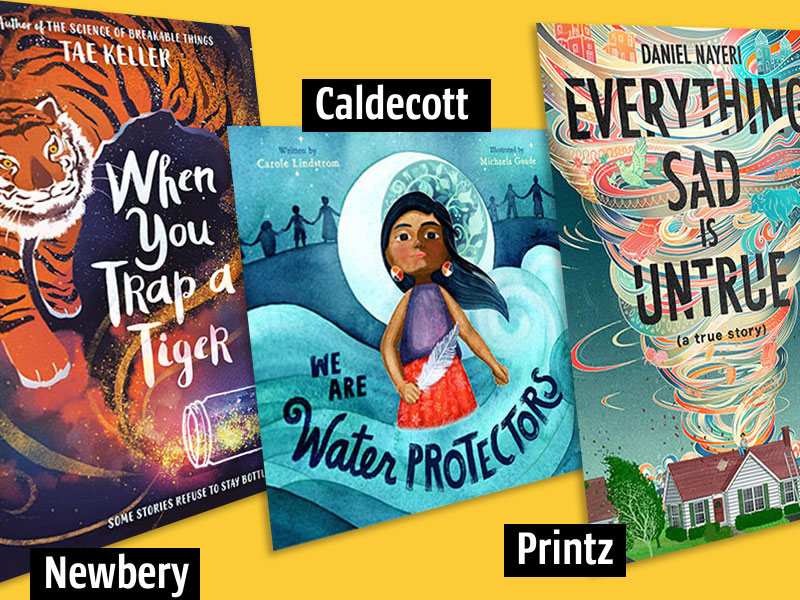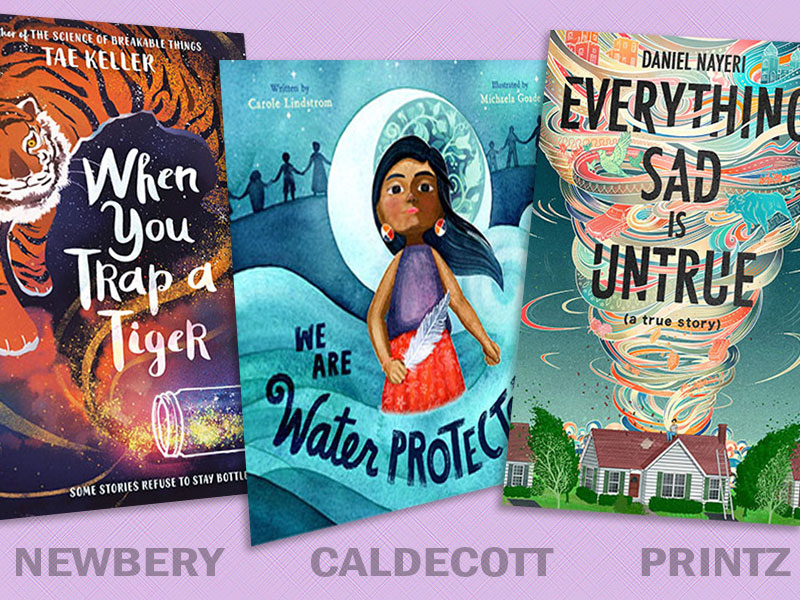War and Conflict in Fact and Fiction: FALLOUT and GROUND ZERO
Steve Sheinkin’s FALLOUT focuses on the decade between the start of the Cold War and the Cuban Missile Crisis. In GROUND ZERO: A NOVEL OF 9/11, Alan Gratz tells two related stories that take place eighteen years apart. In different ways, both are thought-provoking and accessible books that tackle complex concepts in ways that should resonate with young readers.

GROUND ZERO opens by introducing Brandon as he accompanies his dad to work. The chapter ends with the revelation of the date as the two head upstairs. Then the narrative jumps forward exactly eighteen years to Reshmina, who lives in Afghanistan amid the conflicts between the Taliban, the American military, and the Afghan National Army. Alternating chapters advance each story, with tension building along the way.
ADVERTISEMENT
ADVERTISEMENT
The connections between the stories become clearer, including the fact that the soldier that Reshmina helps is actually Brandon as a grown up and the ways that the 9/11 events led to the extended situation in Afghanistan. There are some neat narrative connections too, where the actions of Brandon and Reshmina kind of mirror each other:
At the end of one chapter:
Brandon slipped sideways through the gap and froze.
The 89th floor was gone.
Brandon was staring straight out into open sky.
p 80
The next chapter begins:
Reshmina paused at the top of a ridge to look out at the mountains that swept through Afghanistan and into China. The enormous mountains always humbled her. It was easy to see only the village you lived in and not the wider world if you never stopped to look up.
p 81
I like the way that both characters are struck by awesome visuals at the same time. Similar interplay happens between the narratives. A few examples:
- Passon calls the Taliban (p 151) / Brandon calls his father (p 152)
- Reshmina descends towards her village (p 164) / Brandon heads down the stairs (p 165)
- The tower falls (p 225) / a ceiling caves in (p 231)
- Richard sings (p 240) / Reshmina’s grandmother sings (p 241)
These aren’t so obvious as to feel contrived and they add a layer of connectiveness to the two stories.
The dual narratives are largely successful. The cliffhanger chapter endings and frequent switches are mostly effective. The structure also strengthens the “interpretation of themes,” as we see Reshmina and Brandon (both young and old) trying to make sense of their experiences.
GROUND ZERO also shines in “excellence of presentation for a child audience.” Weaving in big issues in an action-packed drama with two storylines could be too much for young readers to follow, but Gratz does a good job of keeping things easy to follow and digest. I did feel that the accessibility is sometimes accomplished through characters that aren’t that interesting and through prose that is occasionally heavy-handed in its presentation of themes. It’s an ambitious attempt, either way, and worthy of discussion.

FALLOUT picks up about where BOMB (2013 Newbery Honor book (my committee!)) left off. But you certainly don’t need to have read the previous book, because Sheinkin brings us right in to the fascinating, multi-layered true story. Actually “stories” is more accurate, because he includes so many related historical threads.
ADVERTISEMENT
ADVERTISEMENT
The prologue about the paperboy and the false nickel is fascinating, but also important: he refers back to it several times later in the book. His tone is sometimes playful, which kind of invites readers to join him in an amusing look at history and human nature: “And now we’re nearly back to where we began, with a paperboy’s tip cracking open in a Brooklyn stairwell.” (33)
At the same time, the dramatic significance of the events comes through. Here’s how he relates the scene when Eisenhower “described the procedure a president would use to launch an attack” on the day before John F. Kennedy’s inauguration:
He set down the receiver. He told Kennedy to check his watch. Then he stood and turned to the French doors leading out to the White House lawn.
In exactly three minutes a Marine helicopter set down on the grass.
Kennedy was in awe.
Three minutes. A football, a phone call, a few commands.
Three minutes, and he could be on his way to a bunker carved into a mountain.Three minutes, and he could be leading his country into World War III.
p 96
The Newbery Criteria cite “presentation of information including accuracy, clarity, and organization” as a key literary element, and FALLOUT excels in this area. The carefully arranged narrative introduces many intertwining events and a large cast of characters without losing the reader. Sometimes he deftly switches back and forth between events that are nearly simultaneous, like the Bay of Pigs preparation, the Soviet’s space launch, and JFK’s first pitch at a baseball game.
He provides just the right amount of background information on topics such as the physics of bombs (p 21), secret codes (p 35-36), piloting U-2’s (p 51), and cosmonaut training (p 118-119). Well-chosen specific details bring scenes to life and help readers connect with the historical figures; for example, we learn how the two cosmonauts both fake sleep as part of their competition to take the first flight (p 119). It humanizes the cosmonauts and provides insight into the Soviet training methods in a way that readers will remember.
This is excellent nonfiction: engaging, insightful, suspenseful, and thought-provoking, all accomplished in a way that meets that Newbery standard of “excellence of presentation for a child audience.”
FALLOUT has jumped close to the top of my current list; GROUND ZERO isn’t quite there, but has strong elements. Is either title on your Newbery radar?
Filed under: Book Discussion
About Steven Engelfried
Steven Engelfried was the Library Services Manager at the Wilsonville Public Library in Oregon until he retired in 2022 after 35 years as a full-time librarian. He served on the 2010 Newbery committee, chaired the 2013 Newbery Committee, and also served on the 2002 Caldecott committee. You can reach him at sengelfried@yahoo.com.
ADVERTISEMENT
ADVERTISEMENT
SLJ Blog Network
Happy Poem in Your Pocket Day!
This Q&A is Going Exactly As Planned: A Talk with Tao Nyeu About Her Latest Book
More Geronimo Stilton Graphic Novels Coming from Papercutz | News
Parsing Religion in Public Schools
Environmental Mystery for Middle Grade Readers, a guest post by Rae Chalmers
ADVERTISEMENT








I really appreciate how you discussed the parallel images of the two characters in Ground Zero. That’s something I noticed but was not able to put into words.
I had high expectations for Ground Zero because it was flying off the shelves at my library and the kids loved it. I asked some kids and they said the characters were cool, the action was intense and they liked the two time periods. It took me a while to realize the two stories intertwined but once I thought about that, it’s pretty genius. Especially when you think of kids reading it now, who weren’t alive when 9/11 happened and do not understand the magnitude of the event
That really gives it extra points for theme and presentation of content
For FAllOUT, I accidentally put a YA book from 2012 on hold so.. I’ll get back to you on that one….
FALLOUT is one of the books at the top of my list for a Newbery. I read this book in one sitting, it was so riveting. It reads like a spy thriller only it’s true. The book is well researched with source notes, bibliography and an index for references. The Table of Contents provides a clear picture of the book’s organization and the points of reference are clear to young readers.
Sheinkin is able to include the smallest details, such as the paperboy incident, the hollow coins and the Berlin tunnel diggers and weave them into the complex story of Cold War games with the Russians. I loved how he looked at the point of view from a variety of players, such as the Cuban missile crises from the perspectives of Khrushchev, to Kennedy to Castro and showed how they were bluffing each other. This book left me curious to find out more such as, How close did we really get to WWIII? How does this compare to the twenty-first century threats?
Sheinkin’s narrative writing style with well developed first hand accounts brings his subjects to life. Telling the story of multiple spies, how they worked and the techniques they used, definitely appeals to kids. The different settings in this book are well described and added clarity to this time in history. I thought this book meets the criteria for a Newbery Award, especially presentation of information, development of plot, delineation of characters and setting, and appropriateness of style.
Thanks for pointing out the table of contents, Rox Anne. It does show the organizational structure very neatly. And it reminds me of how well Sheinkin presents historical events as a sort of tapestry, with big and small events that are all related in one way or another. And the variety of people that play significant or minor roles in it all.